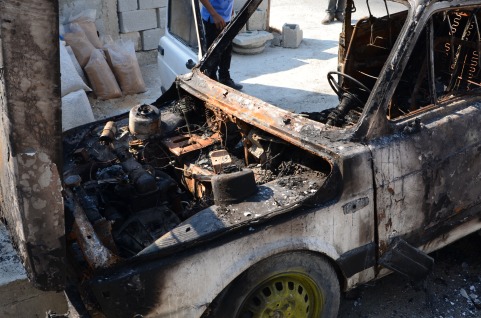Category: Reports
-
Settlers burn olive trees in Sarta
27th September 2013 | International Solidarity Movement, Nablus Team | Sarta, Occupied Palestine Settlers burnt around 35 olive trees in the Palestinian village of Sarta late on Thursday night, following the area being declared a closed military zone in preparation for the construction of a new settler road. Around 60 settlers from the illegal Bruchin settlement and…
-
Vicious settler attack leaves 15-year-old in need of hospitalisation
24th September 2013 | International Solidarity Movement, Khalil Team | Hebron, Occupied Palestine Yesterday, Monday 23rd September, a mob of Israeli settlers invaded the roof of a Palestinian family in Hebron, attacked several Palestinians and international activists and beat a 15-year-old unconscious, leading to hospitalisation. At approximately 5pm a group of Israeli settlers and Jewish…
-
Dozens injured and hundreds of arrests in intense Hebron clashes
23rd September 2013 | International Solidarity Movement, Khalil Team | Hebron, Occupied Palestine On Sunday 22nd September, heavy clashes took place across Hebron, leading to the injury and arrest of numerous Palestinians as well as the death of an Israeli soldier. Hebron is currently declared a military zone with a curfew imposed and all entrances to…

